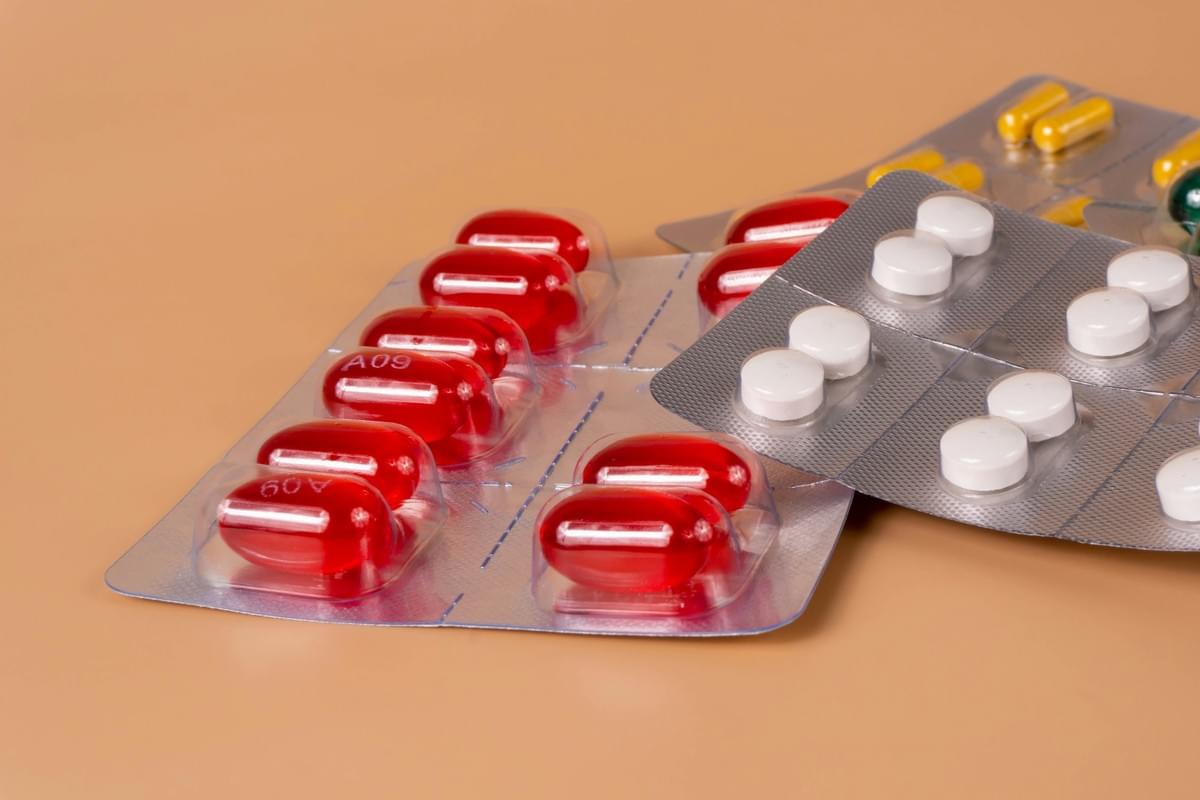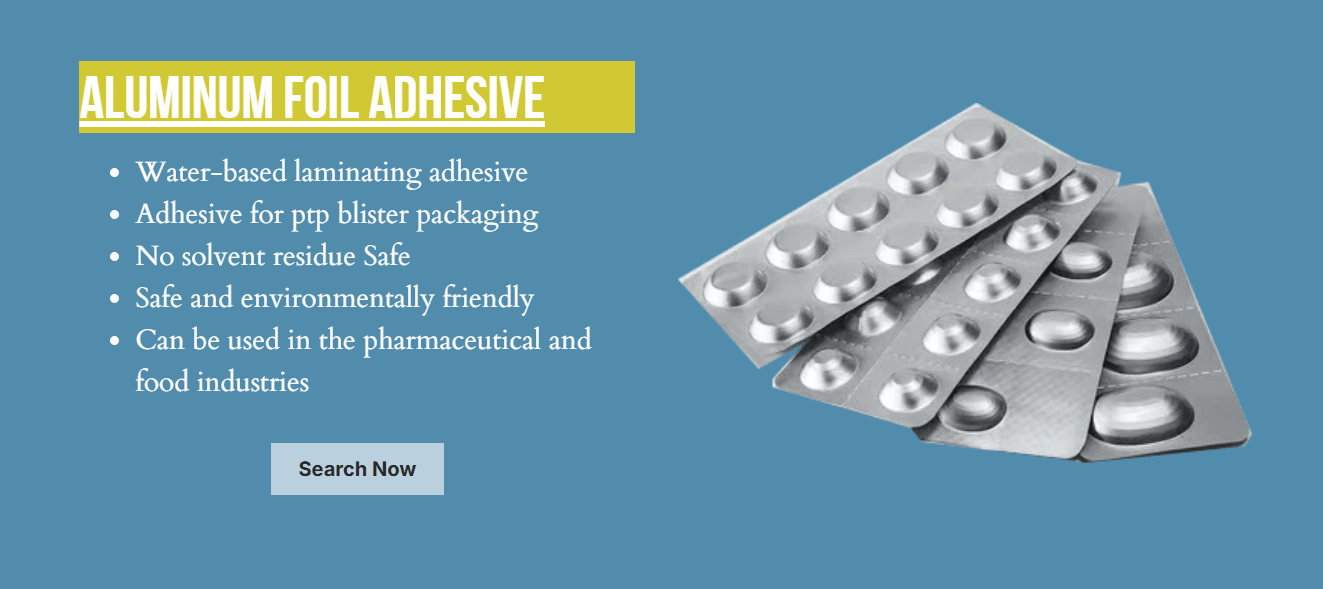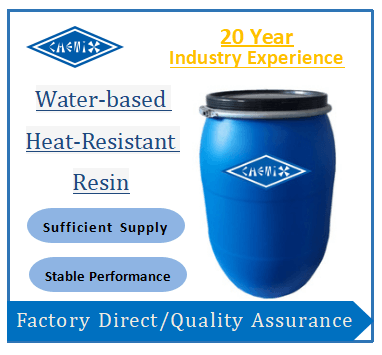Introduction

In the world of packaging, blister packs have carved out a significant niche, primarily due to their effectiveness in protecting products while also enhancing visibility. At the heart of this innovation lies PVC blister adhesive, a crucial component that ensures the integrity and performance of these packages. Understanding the intricacies of Blister Pack Adhesives is essential for manufacturers aiming to deliver high-quality products that meet both consumer expectations and regulatory standards.
Understanding Blister Pack Adhesives
Blister Pack Adhesives play a pivotal role in the packaging industry by providing a reliable bond between the blister film and backing material. These adhesives are specifically designed to withstand various environmental conditions while ensuring that products remain secure until they reach consumers. The composition of these adhesives, particularly those based on PVC, influences not only adhesion strength but also overall flexibility and durability.
Importance of High-Performance Solutions
High-performance solutions in blister packaging are non-negotiable for manufacturers who wish to maintain product quality and safety standards. With rising consumer demands for sustainable and efficient packaging, utilizing superior Blister Pack Adhesives has become more critical than ever. The right adhesive can make all the difference in achieving optimal performance during production and throughout a product's shelf life.
Overview of Water-Based Technologies
Water-based technologies have emerged as a game-changer in the realm of adhesive applications, particularly for PVC blister adhesive formulations. These eco-friendly alternatives offer numerous advantages over traditional solvent-based options, such as reduced environmental impact and lower VOC emissions during manufacturing processes. By embracing water-based technologies, companies can ensure they meet sustainability goals without compromising on performance or flexibility in lamination applications.
The Chemistry Behind PVC Blister Adhesive

Understanding the chemistry behind PVC blister adhesive is crucial for anyone involved in the production and application of blister pack adhesives. These adhesives are specially formulated to ensure optimal adhesion and flexibility, which are essential for protecting products while maintaining their integrity. By delving into the components and advantages of these adhesives, we can appreciate their role in flexible lamination.
Key Components of Blister Pack Adhesives
At the heart of any effective PVC blister adhesive lies a blend of key components that work in harmony to achieve superior performance. Typically, these adhesives consist of polymers, plasticizers, and additives that enhance adhesion properties and film formation. The combination ensures that the blister packs maintain their shape while securely holding products in place.
The polymers used often include polyvinyl chloride (PVC) or other thermoplastic materials that provide strong bonding capabilities. Plasticizers are added to improve flexibility, allowing the adhesive to withstand various stresses without cracking or losing its grip. Additives such as stabilizers and fillers further refine the properties of blister pack adhesives, making them suitable for a wide range of applications.
Advantages of Water-Based Resin
Water-based resins have emerged as a game-changer in the world of PVC blister adhesive production due to their numerous advantages over traditional solvent-based options. First and foremost, they offer a significantly lower environmental impact by reducing volatile organic compound (VOC) emissions during manufacturing processes. This makes water-based resins not only safer for workers but also more sustainable for our planet.
Additionally, water-based resins provide excellent adhesion characteristics while maintaining flexibility—key elements needed for durable flexible lamination applications. They also tend to exhibit faster drying times compared to solvent-based alternatives, which can streamline production processes significantly. With advances in formulation technology, these resins can now match or even exceed the performance benchmarks set by older solvent systems.
Comparisons to Solvent-Based Alternatives
When comparing PVC blister adhesive options, one cannot overlook the stark differences between water-based resins and solvent-based alternatives. While solvent-based adhesives have long been favored for their strong bonding capabilities, they come with drawbacks such as higher VOC emissions and potential health risks associated with inhalation during application processes. In contrast, water-based formulations prioritize safety without compromising on performance.
Moreover, water-based PVC blister adhesives often demonstrate superior resistance to yellowing over time—a common issue faced by many solvent systems when exposed to light or heat conditions during storage or use. This longevity is particularly important in industries where product appearance is paramount; no one wants a faded package ruining an otherwise stellar product presentation! Ultimately, embracing water-based technology represents not just a shift towards sustainability but also an evolution towards better-performing solutions in flexible lamination.
Crafting Durable and Flexible Lamination

When it comes to creating effective packaging solutions, the art of crafting durable and flexible lamination is paramount. Blister Pack Adhesives play a crucial role in ensuring that products remain protected while also being easily accessible for consumers. Understanding the techniques behind optimal film formation can enhance both the functionality and aesthetic appeal of PVC blister adhesive applications.
Techniques for Optimal Film Formation
Achieving optimal film formation with PVC blister adhesive requires a blend of science and artistry. The key lies in selecting the right combination of materials and processing conditions to ensure a uniform, robust film that adheres well to various substrates. Techniques such as adjusting temperature, humidity, and curing times can significantly impact the performance characteristics of Blister Pack Adhesives, leading to improved durability and flexibility.
Moreover, utilizing advanced coating methods like slot-die or gravure coating can enhance the even distribution of adhesive across surfaces. This precision not only ensures better adhesion but also contributes to a more aesthetically pleasing finish in flexible lamination products. By focusing on these techniques, manufacturers can elevate their packaging solutions while maintaining cost-effectiveness.
Balancing Adhesion and Flexibility
In the world of Blister Pack Adhesives, striking a balance between adhesion strength and flexibility is essential for successful lamination processes. Too much adhesion may lead to rigidity, making it difficult for packages to conform during handling or transportation; conversely, insufficient adhesion could result in product failure due to separation or tearing. Therefore, understanding how different formulations affect these properties is vital for optimizing PVC blister adhesive performance.
One approach involves experimenting with various resin blends that offer both high adhesion levels and enhanced flexibility. For instance, incorporating plasticizers into the formulation can improve flexibility without sacrificing bond strength—an ideal scenario for flexible lamination applications where movement is required. Ultimately, achieving this balance not only extends product shelf life but also enhances user experience by ensuring easy opening without compromising security.
Case Studies of Successful Applications
Real-world examples illustrate how innovative approaches to crafting durable and flexible lamination using PVC blister adhesive have led to remarkable outcomes across industries. In one case study involving pharmaceutical packaging, a new formulation was developed that provided superior moisture resistance while maintaining excellent clarity—critical factors in presenting medication information clearly while preserving efficacy.
Another success story comes from the food packaging sector where companies adopted water-based Blister Pack Adhesives that met stringent regulatory requirements while offering enhanced flexibility during production processes. These advancements not only improved operational efficiency but also contributed positively toward sustainability goals by reducing harmful emissions associated with traditional adhesives.
Environmental Impact of Adhesive Choices

In today's eco-conscious marketplace, the choice of adhesive can significantly impact both product performance and environmental sustainability. Among the various options available, sustainable water-based resins stand out for their ability to deliver high-quality performance while minimizing ecological footprints. This section will delve into the benefits of these resins, their role in reducing volatile organic compound (VOC) emissions, and a closer look at Chemix's innovative solutions.
Benefits of Sustainable Water-Based Resins
Sustainable water-based resins are revolutionizing the world of blister pack adhesives by offering a safer alternative without compromising on performance. These adhesives are typically free from harmful solvents, making them less hazardous to both workers and consumers alike. Additionally, they provide excellent adhesion properties essential for flexible lamination, ensuring that products remain intact and secure throughout their lifecycle.
Another significant advantage is their compatibility with various substrates commonly used in PVC blister adhesive applications. This versatility allows manufacturers to maintain high standards while adhering to environmental regulations more easily. Ultimately, opting for sustainable water-based resins not only benefits the planet but also enhances brand reputation among increasingly eco-aware consumers.
Reducing VOC Emissions in Manufacturing
Volatile organic compounds (VOCs) are notorious for contributing to air pollution and posing health risks during manufacturing processes involving traditional solvent-based adhesives. By switching to water-based alternatives like those found in blister pack adhesives, manufacturers can drastically reduce VOC emissions without sacrificing quality or efficiency. This transition is crucial as industries face stricter regulations aimed at minimizing health hazards associated with chemical exposure.
Moreover, reducing VOC emissions aligns with global sustainability goals by promoting cleaner production methods that benefit both workers and surrounding communities. The use of PVC blister adhesive formulations that prioritize low-emission components signifies a commitment to responsible manufacturing practices that resonate well with modern consumer values. As companies strive for greener operations, adopting water-based technologies becomes not just an option but a necessity.
Chemix's Water-Based Resin Solution Explained
Chemix has emerged as a leader in providing cutting-edge water-based resin solutions tailored specifically for blister pack adhesives applications. Their innovative formulations offer exceptional bonding strength while maintaining flexibility—an essential characteristic for effective flexible lamination in various packaging formats. By focusing on sustainability without compromising performance, Chemix positions itself as a forward-thinking partner in the industry.
The company's commitment extends beyond just product development; they actively engage with clients to ensure optimal use of their PVC blister adhesive solutions across diverse applications. With extensive support and guidance on implementation strategies, Chemix helps manufacturers navigate the complexities of transitioning from traditional solvent systems to environmentally friendly alternatives seamlessly. As we look toward the future of adhesive technology, Chemix exemplifies how innovation can harmonize with ecological responsibility.
Innovations in Adhesive Technology

In the fast-evolving world of packaging, innovations in adhesive technology are paving the way for enhanced performance and sustainability. Blister Pack Adhesives have undergone significant advancements, particularly with the rise of water-based solutions that offer both environmental benefits and superior bonding capabilities. As manufacturers continue to push the boundaries, we see exciting developments that cater to diverse applications while prioritizing flexibility and durability.
Cutting-Edge Developments in Blister Pack Adhesives
Recent years have witnessed a surge in cutting-edge developments within the realm of PVC blister adhesive formulations. These advancements focus on improving adhesion properties while minimizing environmental impact, aligning perfectly with modern sustainability goals. Manufacturers are now exploring bio-based raw materials and advanced polymer technologies that not only enhance bond strength but also ensure compliance with stringent regulatory requirements.
Moreover, innovations such as smart adhesives are emerging, which can adapt their properties based on environmental conditions or stimuli like temperature and humidity. This responsiveness makes them ideal for flexible lamination applications where maintaining integrity is crucial under varying conditions. The integration of nanotechnology into blister pack adhesives is another breakthrough, enhancing barrier performance without compromising flexibility or adhesion.
Future Trends in Water-Based Applications
The future of water-based applications in blister pack adhesives looks promising as industries increasingly shift towards sustainable practices. With stricter regulations on volatile organic compounds (VOCs), water-based resins are becoming the go-to choice for manufacturers aiming to reduce their carbon footprint while maintaining product quality. Innovations like hybrid formulations that combine water-based resins with traditional materials are gaining traction, offering a balance between performance and eco-friendliness.
Furthermore, advancements in digital printing technology are influencing adhesive formulations designed specifically for flexible lamination processes. This trend allows for personalized packaging solutions without sacrificing efficiency or durability—an essential factor for modern consumers seeking unique products. As research continues into more efficient production techniques and raw material sourcing, we can expect even greater strides toward sustainability within this sector.
Real-World Examples of Innovative Usage
Real-world examples highlight how innovative uses of PVC blister adhesive and related technologies can transform packaging solutions across various industries. For instance, pharmaceutical companies are adopting new blister pack designs using advanced adhesives that ensure product integrity while enhancing user convenience through easy-opening features. These innovations not only improve functionality but also contribute to better patient compliance by making medication access simpler.
In the food industry, flexible lamination techniques utilizing state-of-the-art water-based adhesives have led to longer shelf life for perishable goods while reducing waste through more efficient packaging solutions. Companies specializing in eco-friendly products have successfully implemented these innovations to align their branding with sustainable practices—an appealing factor for environmentally conscious consumers today. Such real-world applications underscore the versatility and effectiveness of modern Blister Pack Adhesives in meeting diverse market demands.
Quality Control in Adhesive Production
Ensuring the quality of PVC blister adhesives is essential for maintaining performance and customer satisfaction. With the diverse applications of Blister Pack Adhesives, rigorous quality control measures are crucial to avoid costly production errors and ensure product longevity. By implementing effective testing methods and consistency checks, manufacturers can guarantee that their flexible lamination products meet industry standards.
Testing Methods for Performance Evaluation
Performance evaluation of PVC blister adhesives involves a variety of testing methods designed to assess adhesion strength, flexibility, and resistance to environmental factors. Techniques such as peel tests, shear tests, and tensile strength assessments provide valuable data on how well Blister Pack Adhesives will perform under real-world conditions. Additionally, accelerated aging tests help predict the long-term durability of these adhesives by simulating years of exposure in a matter of weeks.
Ensuring Consistency in Blister Pack Adhesives
Consistency is key when it comes to producing high-quality PVC blister adhesives that can withstand the rigors of flexible lamination processes. Manufacturers must establish standardized procedures for mixing components, applying adhesives, and curing to minimize variability between batches. Regular audits and statistical process control (SPC) techniques can further enhance consistency by identifying trends or deviations that may affect adhesive performance.
Guidelines for Manufacturing Excellence
To achieve manufacturing excellence in producing Blister Pack Adhesives, companies should adopt best practices that encompass all stages from raw material selection to final product testing. Implementing lean manufacturing principles can streamline operations while reducing waste and improving efficiency in adhesive production lines. Furthermore, continuous training programs for staff on the latest technologies and quality assurance practices ensure that everyone is aligned with the goal of delivering top-notch PVC blister adhesive solutions.
Conclusion
In the ever-evolving landscape of packaging, understanding the nuances of PVC blister adhesive is crucial for industry professionals. The advancements in Blister Pack Adhesives, particularly those utilizing water-based technologies, not only enhance performance but also align with sustainability goals. As we reflect on the importance of flexible lamination, it becomes clear that these innovations are paving the way for a more efficient and environmentally friendly future.
Key Takeaways for Industry Professionals
For professionals working with Blister Pack Adhesives, the shift towards water-based solutions stands out as a pivotal development. These adhesives offer significant advantages over traditional solvent-based options, including reduced environmental impact and improved safety for workers. Additionally, mastering the art of flexible lamination can lead to stronger bonds and enhanced product integrity, ensuring that products remain secure while being visually appealing.
The Future of Blister Pack Adhesives
Looking ahead, we can anticipate exciting developments in PVC blister adhesive technology that will further revolutionize packaging solutions. Innovations will likely focus on enhancing adhesion properties while maintaining flexibility in lamination processes to meet diverse consumer needs. Moreover, as sustainability continues to take center stage in manufacturing practices, we can expect an increase in demand for eco-friendly adhesive options that do not compromise on performance.
Embracing Sustainable Practices in Adhesive Manufacturing
Embracing sustainable practices in adhesive manufacturing is no longer just a trend; it's becoming a necessity for businesses aiming to thrive in today’s market. By prioritizing water-based resins and minimizing VOC emissions associated with traditional adhesives like PVC blister adhesive, companies can significantly reduce their environmental footprint. Ultimately, adopting these sustainable approaches not only benefits the planet but also enhances brand reputation and customer loyalty.
